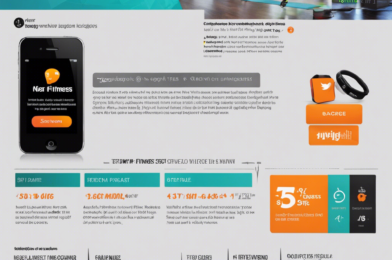In today’s digital age, coding is becoming an increasingly valuable skill to possess. What was once considered a niche ability reserved only for computer scientists and engineers is now emerging as a fundamental skill, much like reading, writing, and arithmetic. With technology integrated into every facet of our lives, understanding the language of computers is no longer optional but essential. Coding empowers individuals to create, innovate, and problem-solve, fostering a mindset that is not only beneficial in the tech sector but in countless other domains as well.
The notion that coding is a complex and intimidating skill to master is a common misconception. On the contrary, coding can be accessible to everyone, regardless of age, gender, or previous experience. A myriad of online resources, from interactive tutorials to massive open online courses (MOOCs), has emerged, making it easier than ever to take the first steps into the world of coding. Many of these platforms offer beginner-friendly interfaces and step-by-step guidance, ensuring that newcomers are not overwhelmed but instead, gradually introduced to coding concepts in a digestible manner.
Coding fosters creativity and logical thinking. It empowers individuals to bring their ideas to life, whether it’s building a simple website or developing a complex application. With code, one can create anything from games and mobile apps to artificial intelligence models and robotics systems. Learning to code involves breaking down complex problems into smaller, manageable tasks, encouraging a structured and systematic approach to problem-solving. These critical thinking skills are transferable across all aspects of life and can benefit individuals in any career path they choose to pursue.
Moreover, coding is an excellent means of enhancing one’s employment prospects. Industries across the board are recognizing the value of coding skills and actively seeking candidates with these capabilities. Job seekers with coding proficiency, even at a basic level, instantly become more appealing to potential employers. Coding proficiency demonstrates a capacity for logical thinking, problem-solving, and a willingness to embrace new challenges, all of which are highly desirable traits in today’s job market.
Breaking down barriers and empowering underrepresented groups is another essential facet of the “everyone should learn to code” movement. Initiatives aimed at introducing coding to women and girls, minorities, and individuals from low-income backgrounds are helping to bridge the digital divide and foster greater diversity in the tech industry. Coding, in this context, becomes a tool for social change, enabling individuals from all walks of life to pursue lucrative careers and contribute their unique perspectives to the technology landscape.
In addition to its practical applications, learning to code offers numerous cognitive benefits. It sharpens the mind, enhances focus and attention to detail, and improves analytical and abstract reasoning skills. The problem-solving strategies acquired through coding can be applied to a multitude of real-world scenarios, enabling individuals to approach challenges with greater confidence and resilience. Coding also encourages a growth mindset, as individuals learn to embrace failure as an opportunity to learn and improve, rather than a roadblock.
The collaborative nature of coding is another significant advantage. Coding is rarely a solitary endeavor, and individuals who learn to code often find themselves connecting with a global community of like-minded individuals. Through online forums, collaborative projects, and open-source initiatives, coders from all over the world come together to share knowledge, provide support, and work collectively to create something bigger than themselves. This fosters a sense of community, encourages teamwork, and provides a platform for continuous learning and personal growth.
Lastly, coding is fun! The sense of accomplishment that comes with writing a piece of code that solves a problem or creates something new is immensely satisfying. Coding allows individuals to express their creativity, explore their passions, and engage in a form of play that is both intellectually stimulating and productive. As technology continues to evolve and shape our world, coding will become an even more crucial skill, and those who take the initiative to learn will undoubtedly reap the rewards.








